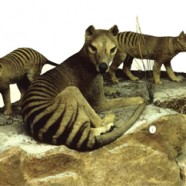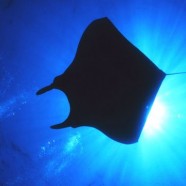Arctic: Keep it In My Backyard (KIMBY)
The Arctic Council is meeting this week in Kiruna Sweden an appropriately choice for the venue considering that mans’ impacts on the Arctic climate will be high on the agenda. Kiruna hosts the largest underground iron mine in the world where in response to ground deformations caused by mining, the city will be relocated over the coming years. Later this week at Kiruna the eight Arctic States (Russia, Finland, Denmark for Greenland, Sweden, Norway, Iceland, the U.S. and Canada) will sign a ‘Marine Oil Pollution Preparedness and Response’ agreement. The agreement aims to strengthen cooperation, coordination and mutual assistance on pollution preparedness and response in the Arctic in order to protect the marine environment from pollution by oil. Despite this noble promise the agreement does little more than reinforce existing international agreements.
Ivory: A very disturbing premiere !
Whatever the motivations of the ivory thief at the Museum of Natural History in Paris are, this heist is to be taken seriously. Is it a personal initiative, an order, or the emergence of a new underground ivory trafficking network in France and Europe?
Since 2011, 82 rhinoceros horns were stolen in Europe, including 7 in France. These thefts are attributed to organized criminal networks. They target museums, antique dealers, auction rooms, taxidermists, and private collectors. These thefts are sometimes accompanied by violence. In zoos, rhinos are under increased protection. The development of thefts is parallel to the increase of poaching in Africa and Asia and the increased price per kilo of the rhinoceros horn on the legal and black markets. Some experts suggest the price goes up to 65,000 euros per kilo.
CITES has no cure for elephant poaching
Compromise and Rhetoric is killing world’s elephants
Despite the praise for the Convention on International Trade in Endangered Species of Wild Fauna and Flora on its 40th anniversary, CITES has failed to protect the elephant. African elephant populations are under siege and in decline primarily to satiate the demand for ivory in Asia. In 2011 alone, around 25,000 elephants or more were slaughtered for their ivory and the killing was even worse in 2012.
Enough is enough. Several conservation and animal welfare organizations, including the David Shepherd Wildlife Foundation (DSWF-United Kingdom), Elephant Advocacy League (United States), Environmental Investigation Agency (EIA-United Kingdom), Fondation Franz Weber (FFW-Switzerland), International Ranger Federation (Australia), Last Great Ape Organization (LAGA-Cameroon), Pro Wildlife (Germany), Robin des Bois (France), Youth for Conservation (Kenya) attending the 16th meeting of the CITES Conference of the Parties are outraged by the failure of CITES to stop the poaching of African elephants, particularly African elephants. Instead of demanding an end to the markets driving the slaughter, CITES Parties are coming up with weak compromises in a feeble attempt to stop the poaching. But China, the single country most responsible for the crisis due to its burgeoning ivory market, won’t even concede its responsibility as the main problem. Nor will CITES admit that previous decisions allowing “legal” sale of ivory to China and Japan have stimulated, not reduced, demand and directly contributed to the poaching.
Would you please revive the species?
CITES – Bangkok
Press Release # 8
Animal species are extinguished. The plenary of CITES (Convention on International Trade in Endangered Species of Wild Fauna and Flora) in Bangkok was the opportunity to bury, without ceremony, the Thylacinus cynocephalus and some other species wiped off the planet in the past century. Their family trees date back several million years. Extinctions are accelerating.
These biological disasters are not caused by any disruptions in climate, geological mutations or functional inadequacies. Mankind is the conductor of these disasters, wreaking havoc through risky manipulations or introductions and through radical exploitation of its surroundings.
The Capitalism of Extinction
Convention on International Trade in Endangered Species of Wild Fauna and Flora
CITES 2013 – Bangkok, 6 pm (local time)
Press Release No. 7
Making money from the extinction of species could become an industry of the future. It has certainly been developed by CITES – Convention on International Trade in Endangered Species of Wild Fauna and Flora.
Looking at the re-opening of international ivory trade, CITES has published à call of tender for an “independent study”. It has been attributed to specialized consultants from southern Africa. Among the 5 authors, Rowan Martin, director of research on wild fauna in Zimbawe, and Debbie A. Peake, one of the best taxidermists of Botswana, are also present. The main recommendation of the study co-financed by the European Union is to create CISO (Central Ivory Selling Organization), a single office for ivory sales. CISO would be modeled after the Diamond Trading Company (DTC), this De Beers Company has lasted over 100 years. One director, named by the main producing states, regulates trade to recognized and accredited governments or private processing companies. Short routes reduce the risks of mixing in illegal ivory. Inter-African sales would be prohibited. The report proposes that it would be possible to collect 8 tons of ivory each year for every 10,000 elephants killed by slaughter, hunting, or natural causes. The authors highlight that this management of ivory would be possible only in the absence of civil disorder and arms conflicts in producing countries. Within the report, ivory is an ore distanced from all biological, ethical and cultural considerations.
The sharks fight back
Convention on International Trade in Endangered Species of Wild Fauna and Flora
CITES 2013 – Bangkok, 17:00 (local time)
Press Release No. 5
Of the 35,000 plant and animal species listed in the CITES* Appendices, only 15 fish will appear in Appendix I and 81 in Appendix II. Fisheries are strategic and political. They must feed humanity while also considering the oceanic territorial claims. Unfortunately, the bluefin tuna has disappeared from all monitors in Bangkok. By contrast, sharks are fighting back with force, accompanied by manta rays.
CITES : Vote blank !
Convention on International Trade in Endangered Species of Wild Fauna and Flora
CITES 2013 – Bangkok, 7.00 pm (local time)
Press release # 6
The United States, Russia, and the European Union take plenary session this week for the 16th CITES assembly. “A joint proposition for polar bears!” such is Robin des Bois’ message for Bangkok.
This new, last resort proposal could ban international polar bear trade concerning eight declining subpopulations. It would be less restrictive than the Appendix-I ban on international trade for all polar bears, and would therefore be more likely to collect more votes than the initial proposal by the United States. The decline of some subpopulations is recognized by all, including Canada. In 1991, Canada regarded the fate of polar bears as something which raised serious concerns. Polar bears in the western part of the Hudson Bay are especially targeted.














